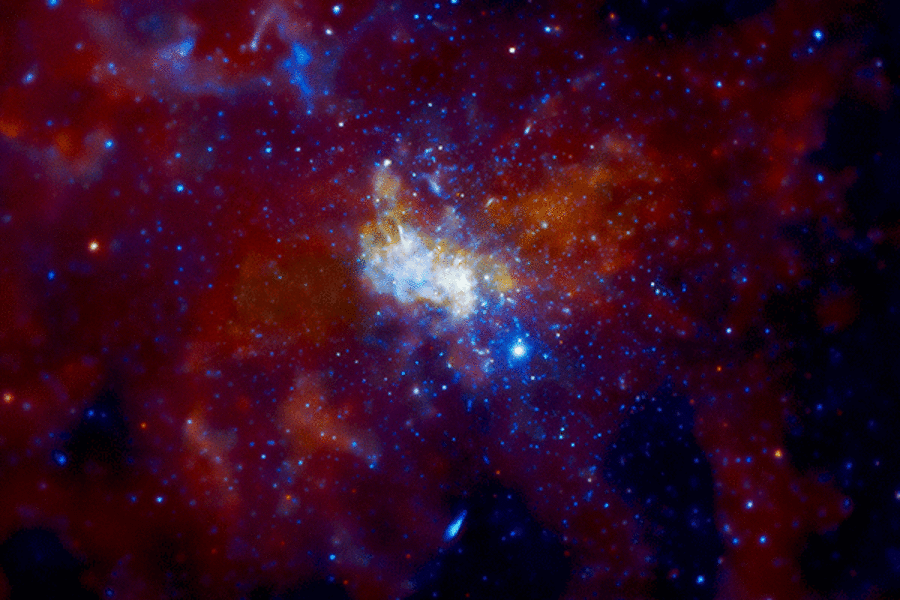Two medium-sized black holes fight back against supermassive black hole
Loading...
A pair of rare medium-sized black holes was spotted near the center of a nearby galaxy, but for some reason they haven't been swallowed up by the supermassive black hole lurking there.
Scientists aren't sure how long these black holes will escape their larger cousin's clutches of death. For now, the dark duo provides more support to the controversial idea of goldilocks-like black holes that are neither very small nor very large.
Astronomers discovered signs of the double-trouble black holes inside the galaxy M82, located about 12 million light-years from Earth, where one light-year is the distance light will travel in a year, or about 6 trillion miles, or 10 trillion kilometers. The observations came from two X-ray space telescopes – NASA's Chandra Observatory and the European Space Agency's XMM-Newton.
"This is the first time that good evidence for two mid-sized black holes has been found in one galaxy," said Hua Feng of China's Tsinghua University, who is lead author of two scientific papers describing the results. "Their location near the center of the galaxy might provide clues about the origin of the Universe's largest black holes – supermassive black holes found in the centers of most galaxies."
For several decades, scientists have had strong evidence for two distinct classes of black hole: those with about as much mass as a star – roughly ten times that of the sun – and very large supermassive black holes, which are often located at the center of galaxies and range from hundreds of thousands to billions of solar masses.
But finding black holes whose weight falls in between those categories has been much more difficult. Some researchers think these intermediate-mass black holes might form in star clusters and sink toward the center of galaxies, where they would eventually clump together to build supermassive black holes.
"We can't say whether this process actually occurred in M82, but we do know that both of these possible mid-sized black holes are located in or near star clusters," said co-researcher Phil Kaaret from the University of Iowa. "Also, M82 is the nearest place to us where the conditions are similar to those in the early Universe, with lots of stars forming."
Even the existence of black holes in this in-between weight category is not agreed upon by astronomers.
"This result is one of the strongest pieces of evidence to date for the existence of an intermediate-mass black hole," Feng said. "This looks just like well-studied examples of stellar-mass black holes, except for being more than 20 times as massive."
The two papers describing these results were recently published in The Astrophysical Journal.





